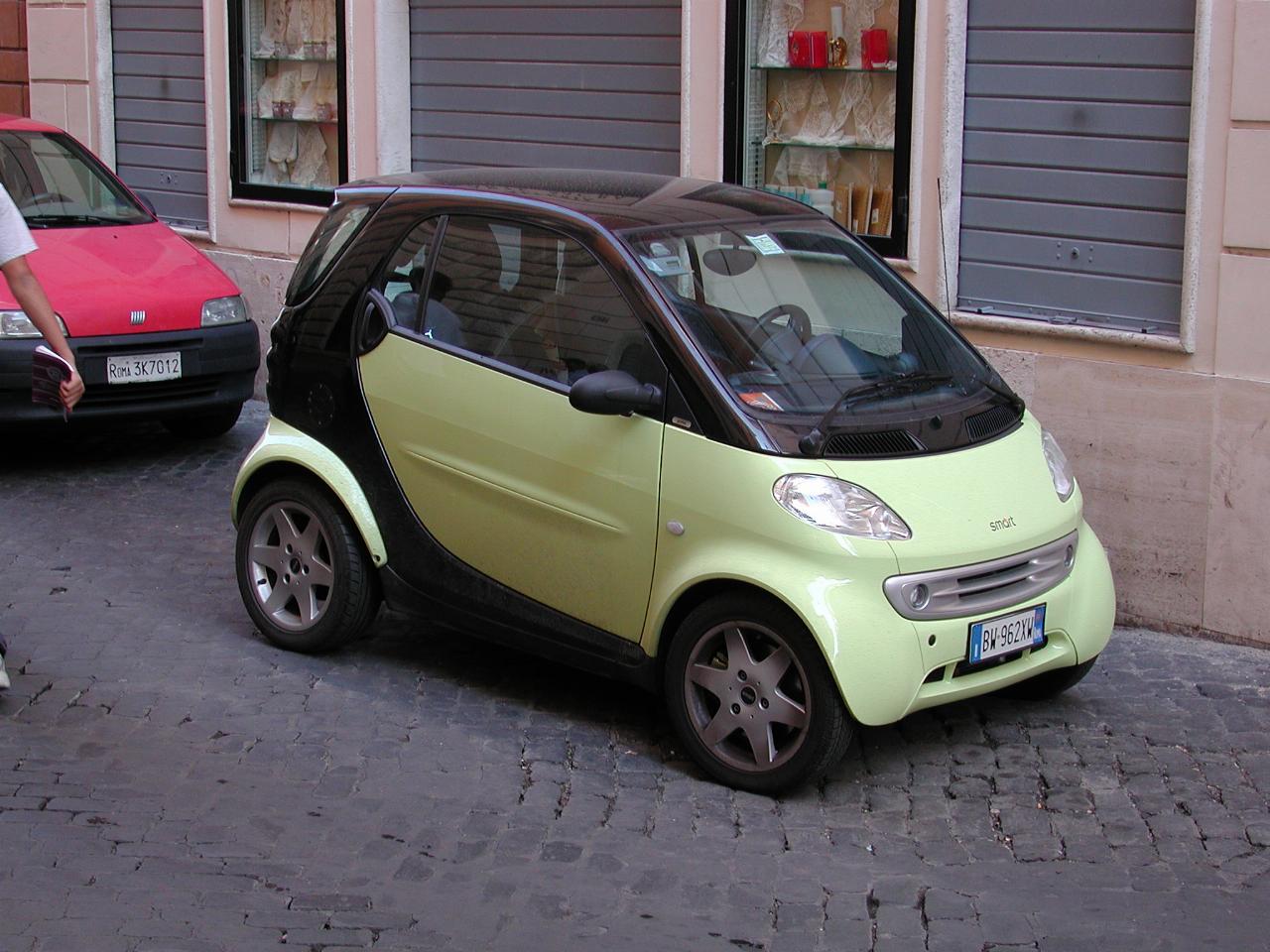
After Mass, we decided to skip the boxed lunch and head off to see some more of Rome, and find a place to eat somewhere along the way. No particular tour route was planned, so we just wandered around - there's so much to see!

These cars have only the identification Smart on them. But the number plate frames mostly indicated Mercedes dealers, so perhaps they are a micro-Mercedes. They are remarkably practical for city use, holding 2 people.
Romans were highly skilled in concrete construction, and this dome was the largest built until 1960! This is also the first temple to combine concrete construcion with Greek classical orders.
On March 16th 609, Pope Boniface IV with the permission of the Emperor Phocas, changed the pagan temple into a Christian church, bringing the bones of many Christians from the catacombs and dedicating it to "St. Mary of the Martyrs".
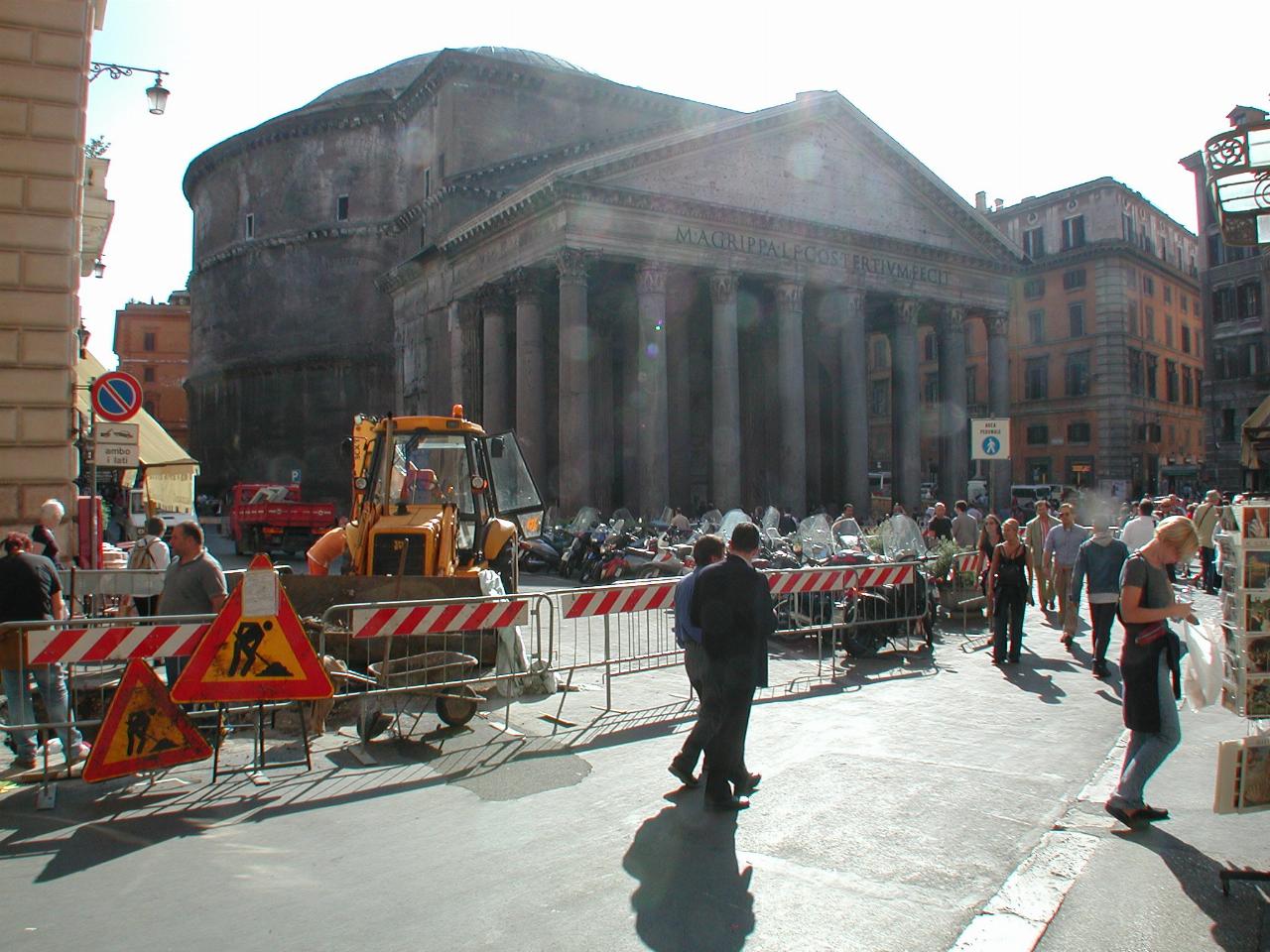
Modern day construction equipment working in front of a 2000 year old building! Ah, the joys of maintaining a city with so many ancient marvels.
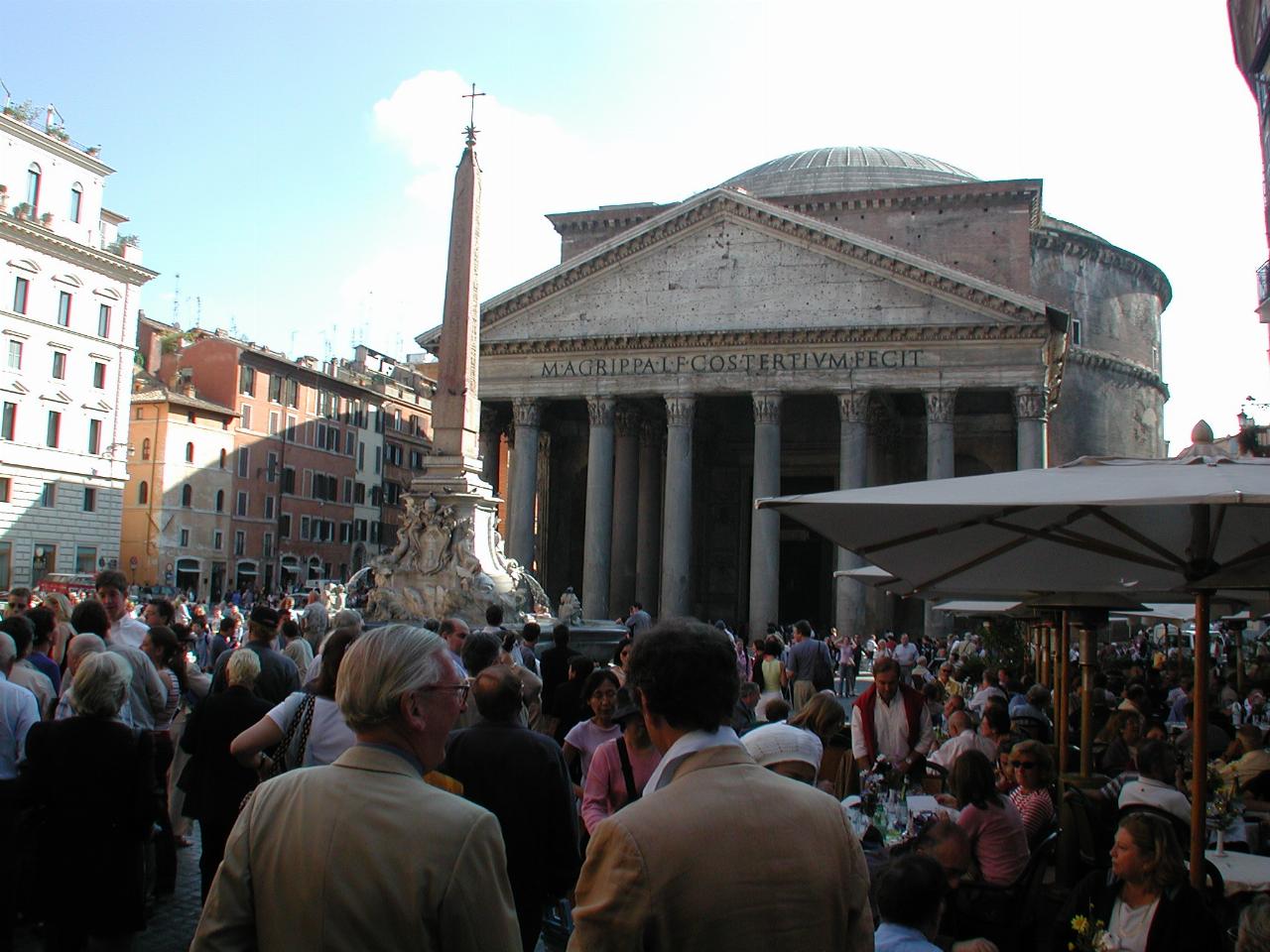
The fountain in the middle of the Piazza della Rotonda is topped by the little obelisk of Ramses II.
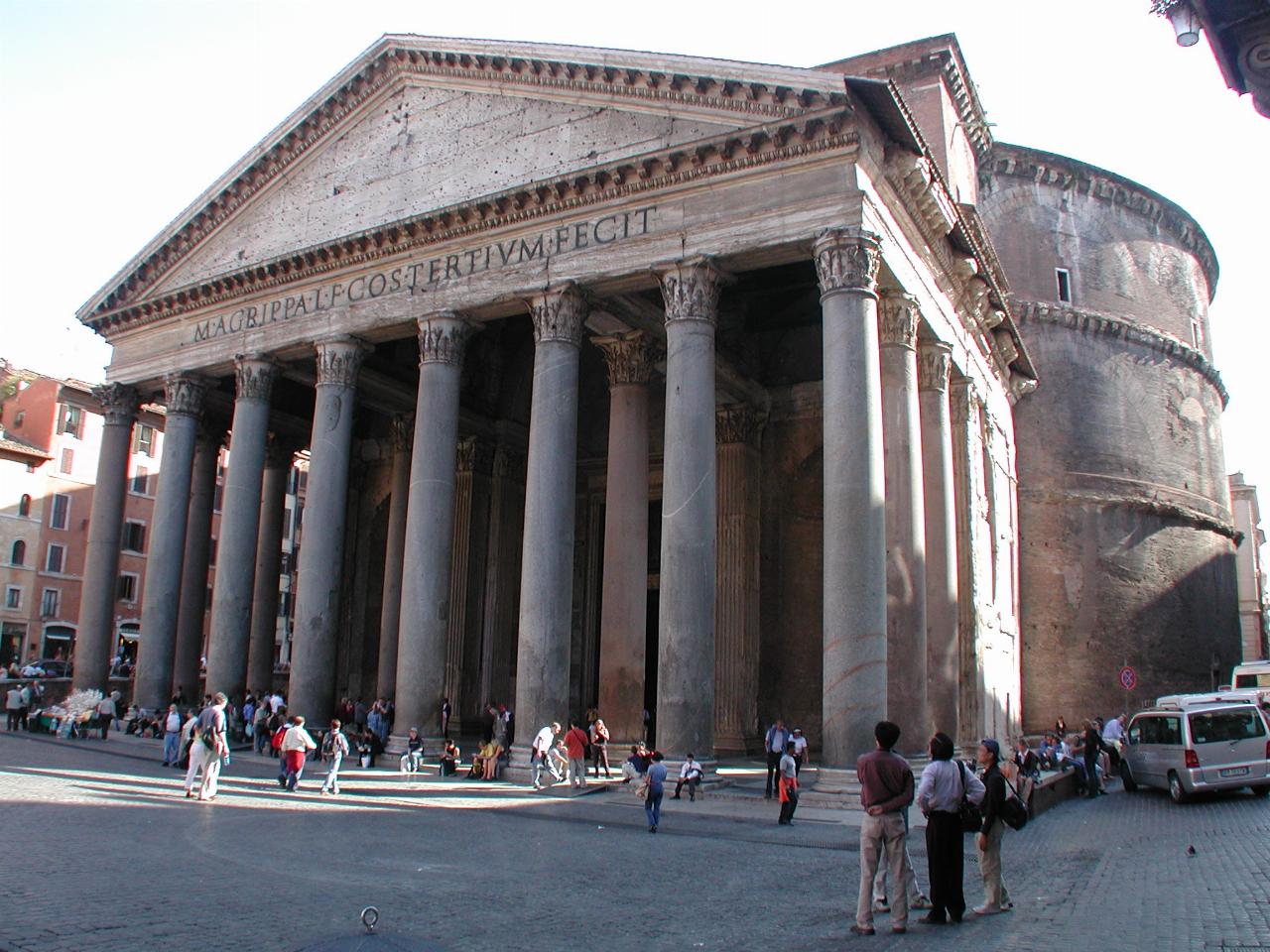
It's BIG!
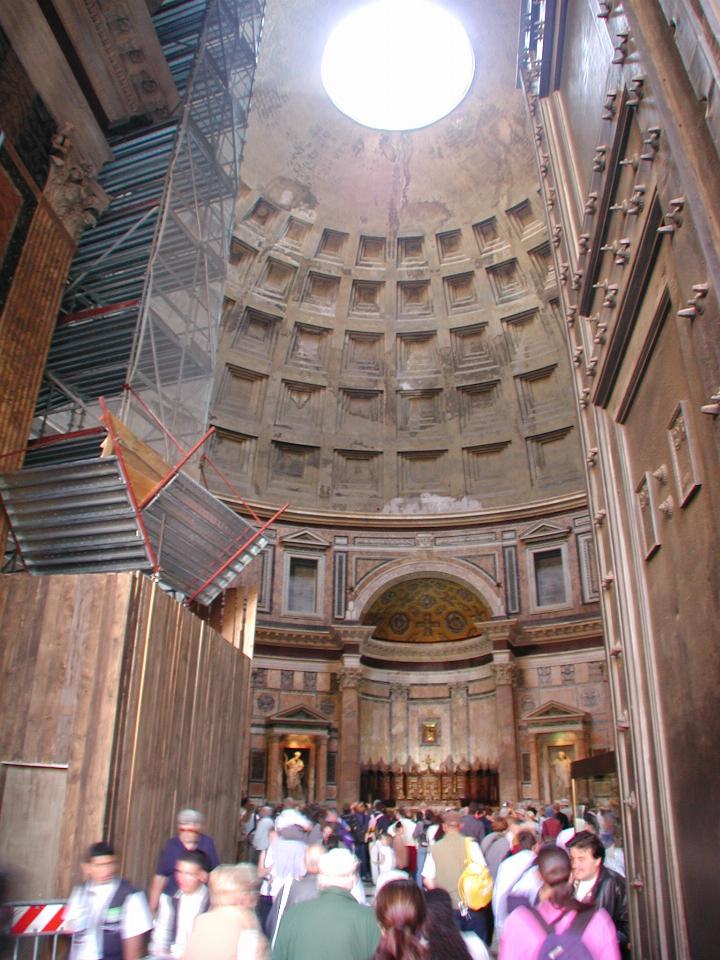
Looking in through the front door. The "hole" in the roof is 9m in diameter! The bronze doors are the original! At the base of the far wall is the Christian altar. The walls are 6m thick at the base. (Although I have seen several figures quoted.)
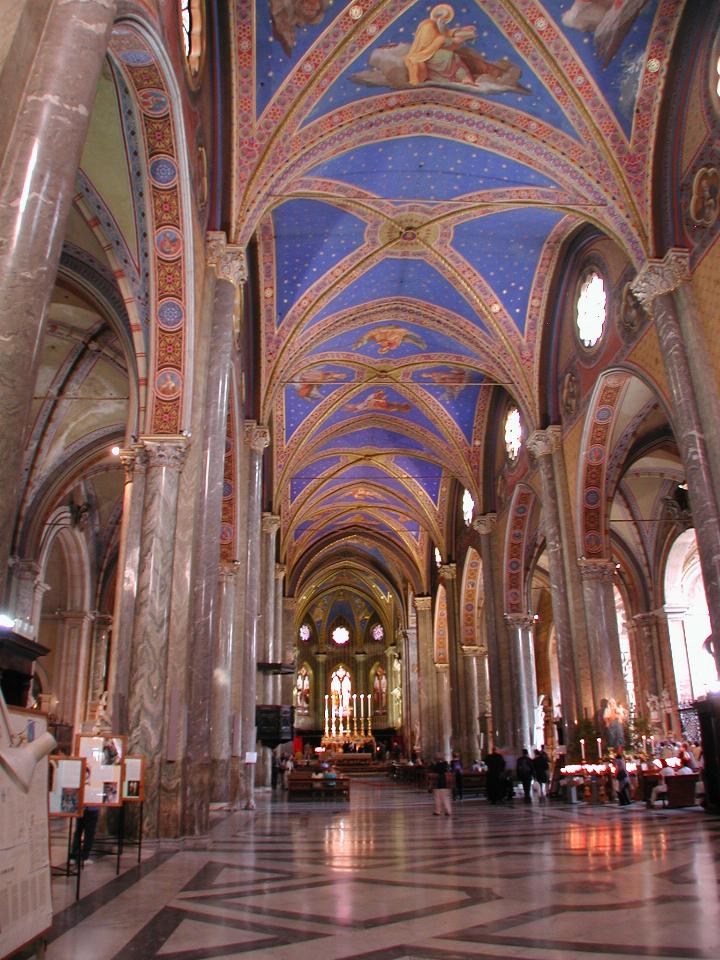
The discouraging thing about touring Rome is seeing all the beautiful churches, which make any local parish church seem rather ordinary. Alas, this is another great church, just a block or so from the Pantheon. #emit
is not known The church was built by Domenican friars between 1280 and 1290. It's a rare example of Gothic architecture in Rome. The name Sopra Minerva (above Minerva) refers to ancient temple to Minerva Calcidica over which this church was built. Under the altar rests the body of St. Catherine of Sienna, 1347 - 1380. The saint lived her last days in the convent adjacent to this church.